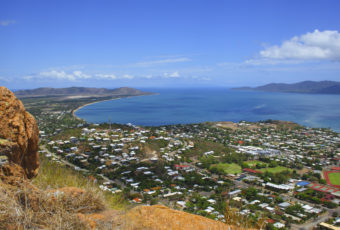Macquarie researchers study Earth's crust in Western Australia
New research has found that the Earth’s crust in Western Australia may provide a model for understanding how crusts are formed elsewhere in the world.
The crust, the outmost solid shell of the earth, is distinctive in the old and stable regions of Western Australia. This so-called Archaean (older than 2.5 billion years) crust in WA holds the oldest direct samples of Earth’s crust, and hosts Australia’s world-class mineral resources.

Lead researcher Dr Huaiyu Yuan from the ARC Centre of Excellence for Core to Crust Fluids Systems at Macquarie University uses seismic techniques to study the crust in the Western Australian craton and determined that the different forming models responsible for the old crust of Western Australia may also be ubiquitous for other crust.
“How this crust formed is controversial, as some advocate it originated in a style analogue to the modern plate tectonics, and others argue the formation was dominated by hot upwelling rocks or plumes that were ubiquitous to the Archean time,” said Dr Huaiyu Yuan.
The long tectonic history of the Archean era in Western Australia provides a window to study the origin of the WA crust using earthquake seismology.
“Western Australia is like a treasure box full of structural jigsaw puzzles. Distinct crustal units, as seen in seismic observations, imply different tectonic forming processes at different times. A correlation was found between the age of these elements and their seismic properties: the oldest crust is thin and light, while the youngest is thick and heavy,” said Dr Yuan.
This phenomenon is attributed to the secular cooling of Earth: when Earth loses heat its dominant operating mechanism changes from vertical plume tectonics to horizontal plate-tectonics.
This change seemed to occur gradually, as inferred from seismic observations, suggesting both mechanisms may have operated in the same time period through the long tectonic history of WA.
Dr Yuan is currently working on expanding this research to other areas of the world, and it is hoped that the change through time in the dominating crust-making processes found in Western Australia may also be characteristic in other old cratons.
Dr Yuan’s research is supported by CCFS at Macquarie, the Centre of Exploration Targeting at University of Western Australia and the Geological Survey of Western Australia.
*

































Ask A Question
Ask us about your program of interest, or if you have a question about our services.
CONTACT US TODAY